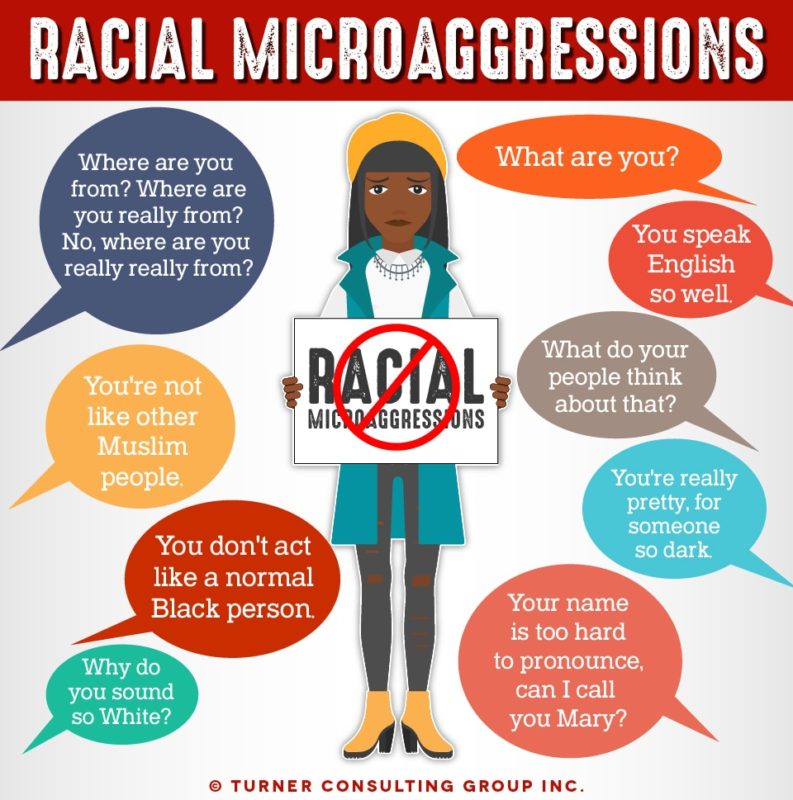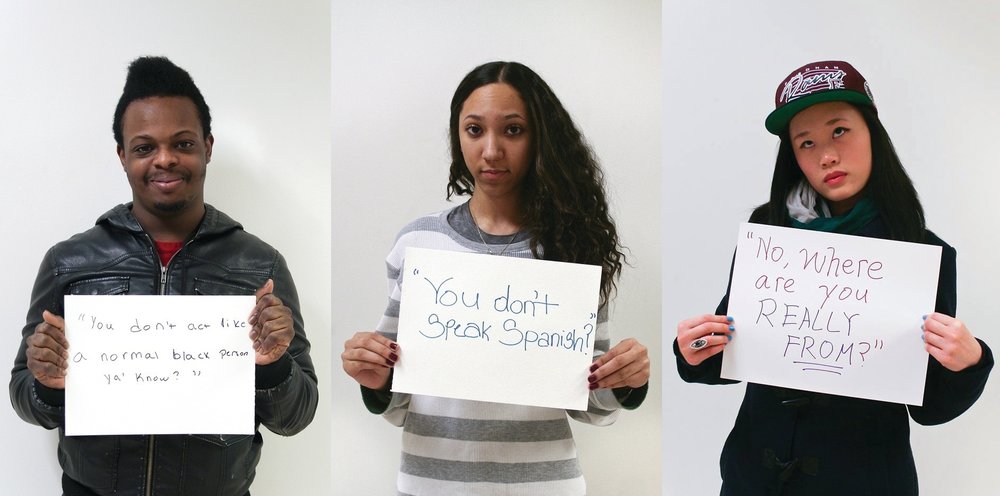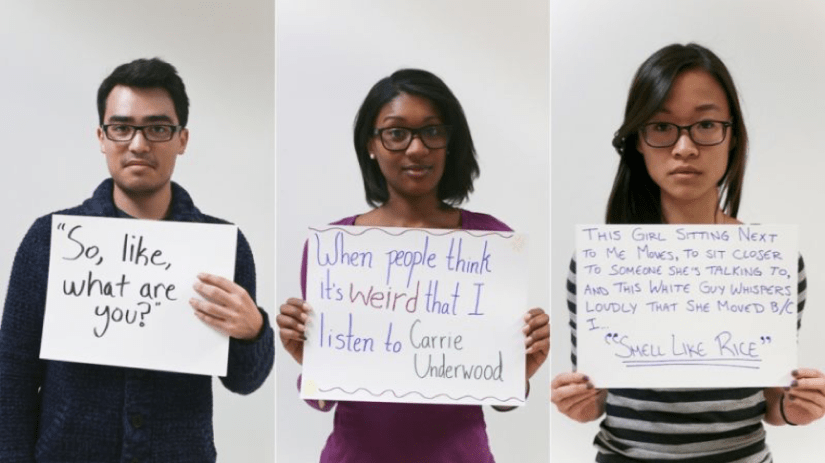To spot racism in the workplace sounds like a pretty easy idea. Make sure there is no name calling and don’t use outdated stereotypes. That is absolutely part of it, but not all of it. So what else needs to be addressed? We will start out with microaggressions and then talk about how to tell Karen at the office that her behavior is unacceptable.
How to spot racism in the workplace: Microaggressions
Obviously degrading names and inappropriate jokes should be left at home. There are a host of other faux pas that tend to happen too though. For example, making rude comments about an ethnic food someone microwaved, touching your Black coworker’s hair, and refusing to learn their actual name are ways that we hurt our coworkers and friends on a regular basis.
Instead of saying “That food smells weird”, try asking what it is politely instead. Maybe you will learn of a new food you might like. To spot racism in the workplace can be difficult when it isn’t outright racism.
Speaking broken Spanish as a joke, and adding O to the end of words to sound Hispanic is rude and a microaggression. It is similar to speaking Ebonics, and assuming that people are uneducated for doing so. This also can lead to the racist assumption that non-white people can’t get into college on their own merit (which they definitely can).
Only relating some things to Black people is a microaggression as well. Luke Rosebaro says “I have to be comfortable eating watermelon at your cookout without fear of jokes or rudeness”. That is a pretty safe measure of whether or not you are exhibiting racist behaviors.
Some other ways to spot racism in the workplace are pretty obvious: paying unfairly based on skin color (on the assumption that foreign workers are worth less money for their labor), and finally the person at the office who overtly acts weird whenever someone who is not white is around. Don’t do that. Be yourself, unlearn the behaviors that cause others pain.
If you step on someone’s toe, you wouldn’t intentionally do it a second time, would you? So if you know something you are doing is hurting people around you, there is a simple solution: stop doing it.
“How do I call out racism in the workplace professionally?”
We can start with a few basic steps to help you prepare to call out racism in the workplace next time with some examples.
Be Ready
Look at the world, and remember that it will happen again. Someone will be racist in front of you at some point. Remind yourself that the next time you see it you will stand up for what is right.
Identify the Behavior
Karen is talking at the water cooler again. You walk by and happen to hear her say one of those dreaded racist-stereotype sentences. What do you do?
“Karen, I hear you classifying an entire ethnicity in a negative manner. Is that correct?” is a sufficient way to call out racist behavior without giving any more attention to the stereotype, and putting the attention on Karen herself.
While doing this, try to avoid name calling. Don’t label the person, but describe the behavior. By not calling names, you are more likely to get through to someone.
Call on their higher morals/principles
“Karen, I have always thought of you as a fair person, I am shocked to hear you say something so bigoted” is the example from Teaching Tolerance.
By reminding them that they are being the opposite of whatever people might think of them, you may be able to get them to shift their mindset.
Set Limits
Don’t be afraid to set a boundary after hearing someone say something racist. It is okay to honor your own belief system too. A fair way to do this would be to say something like “I know you didn’t understand the harm those statements can cause people, but I do. I can’t be around that, so next time you make an insensitive comment as such, I will have to step back from you”.
Check out more from our blog here: Blog
Working from home may mean things are different
You may not see as many microaggressions or hear that nasty water cooler talk. Karen may not be floating over your shoulder watching every move, and she may not be commenting on your coworker for being different. That doesn’t mean that racism has stopped.
Watch social media, watch what people do say around you when you are in meetings or on Zoom. Don’t stop calling out what is racist and bigoted, regardless of where you work. When you spot racism in the workplace, always call it out.




